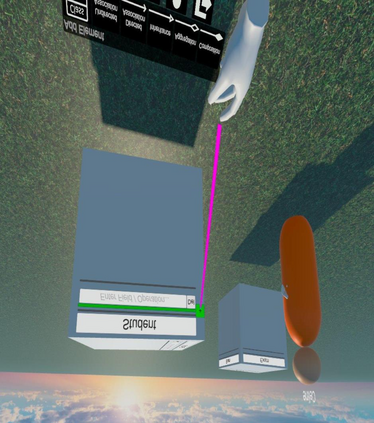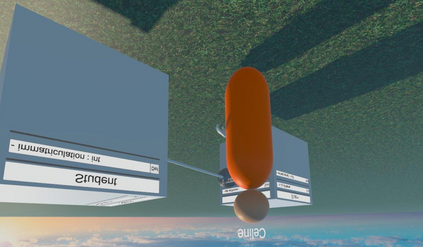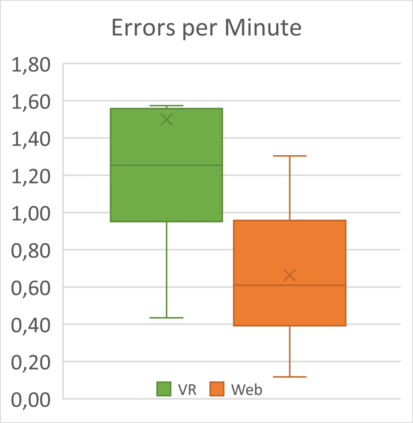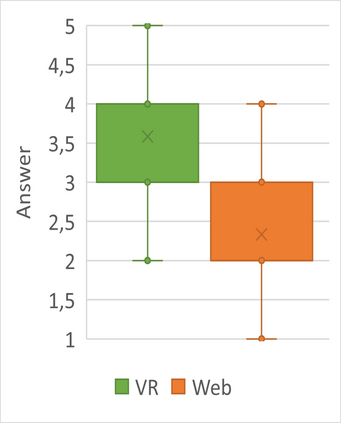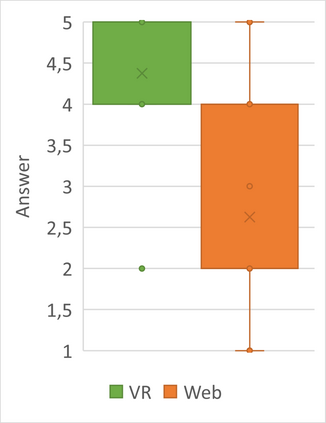Modeling is a key activity in conceptual design and system design. Through collaborative modeling, end-users, stakeholders, experts, and entrepreneurs are able to create a shared understanding of a system representation. While the Unified Modeling Language (UML) is one of the major conceptual modeling languages in object-oriented software engineering, more and more concerns arise from the modeling quality of UML and its tool support. Among them, the limitation of the two-dimensional presentation of its notations and lack of natural collaborative modeling tools are reported to be significant. In this paper, we explore the potential of using Virtual Reality (VR) technology for collaborative UML software design by comparing it with classical collaborative software design using conventional devices (Desktop PC, Laptop). For this purpose, we have developed a VR modeling environment that offers a natural collaborative modeling experience for UML Class Diagrams. Based on a user study with 24 participants, we have compared collaborative VR modeling with conventional modeling with regard to efficiency, effectiveness, and user satisfaction. Results show that the use of VR has some disadvantages concerning efficiency and effectiveness, but the user's fun, the feeling of being in the same room with a remote collaborator, and the naturalness of collaboration were increased.
翻译:建模是概念设计和系统设计中的一项关键活动。通过合作建模,终端用户、利益攸关方、专家和企业家能够建立对系统代表的共同理解。统一建模语言(UML)是面向目标的软件工程中主要的概念建模语言之一,但是,由于UML的建模质量及其工具支持,人们越来越关注UML的建模质量及其工具支持的建模问题。据报告,在概念设计和系统设计中,其标语的二维模式的局限性和缺乏自然合作建模工具十分显著。在本文中,我们探索了将虚拟现实(VR)技术用于合作的UML软件设计的可能性,将它与传统设备(Desktop PC,膝盖电脑)的经典合作软件设计进行比较。为此目的,我们开发了VR建模环境,为UML类图提供了自然建模经验。根据与24名参与者进行的一项用户研究,我们将合作建模VR与常规建模在效率、有效性和用户满意度方面进行了比较。结果显示,VR的使用在效率和有效性方面有一些缺点,但用户的远程和自然合作感感。






